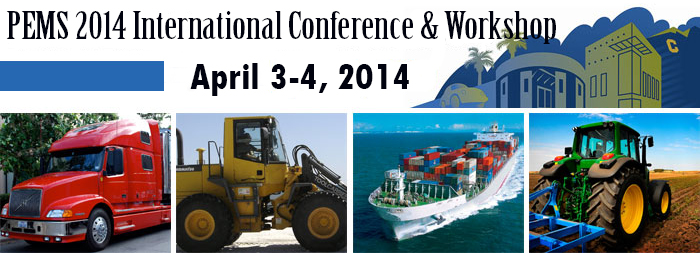As of late, much credit should be given to Dr. Kent Johnson and his colleagues at UC Riverside, CE-CERT.
Kent & company (this includes Nicole Davis, Matt Barth, Wayne Miller, et. al.) have been running a “PEMS Workshop” conference at the Center for Environmental Research & Technology (CE-CERT) facility @ 1084 Columbia Avenue, Riverside CA.
Kent’s team has promoted significant hands-on experience, networking, sharing of ideas, etc. regarding the development of PEMS and field testing. And over the last several years, the conference has yielded a compelling argument for smaller, lighter, less expensive, and easier to use (meaning: ONE PERSON) equipment.
A few conclusions from these conferences:
At PEMS Workshop #1 on March 24, 2011 Carl Fulper of the United States Environmental Protection Agency (USEPA) Office of Transportation and Air Quality (OTAQ) presented on Real World Test Programs. His conclusions on “PEMS Next Steps” were:
• Experience is key in using PEMS equipment in “real world”
• Improve “in-field” Methods and Techniques
o Installation in field, safety, SOPs, etc
o Lower cost (time & $) to use equipment
• Reduce burden to Vehicle Owner
• Improve sample design and recruitment methods
• Equipment needs to be:
o More reliable (increase mean-time failure rate);
o Smaller in size, weight, & power consumption;
o Repairable in field
PEMS Workshop #3, April 11th 2013 the case for “small” PEMS was made by Dr. John Karim of the In-Use Retrofit Section, Mobile Source Control Division at the California Air Resources Board (CARB). His stated “small” PEMS requirements:
• Light Weight
o No significant change to center of gravity
o No effect on maneuverability
• Compact
• Weather resistant
• Safety concerns (FID fuel)
• Measures THC, CO, CO2, NOx, PM, NH3
• Power supply – Own power
• Works on all types of engines
o Carburetors
o Fuel Injection
o 2/4 stroke
o Diesel, Gasoline, etc.
• Exhaust flow rate measurement, ECU/No ECU
• Minimize pulsation effect
In Dr. Karim’s Summary, he concluded:
• There is a need for a “small” PEMS
o Small
o Light weight
o Easy hook-up
o One person installation and operation
o Low Energy Usage
• Further enhancements are needed
o Sample conditioning
o Better techniques to calculate VE (IAT, MAP, and RPM)
o Better technology for HC
o Include corrected NOx
• Provide Post Processing software
• Built from ground up
• Adequate measurement can be achieved
Another important topic to consider is that of economics. However, you may be thinking: “Why should economics be considered when environmental issues are evaluated?” The answer is actually pretty simple.
We will cover this in the next blog post. Stay tuned….


Way cool! Some very valid points! I appreciate you penning this article and also the rest of the site is extremely
good.